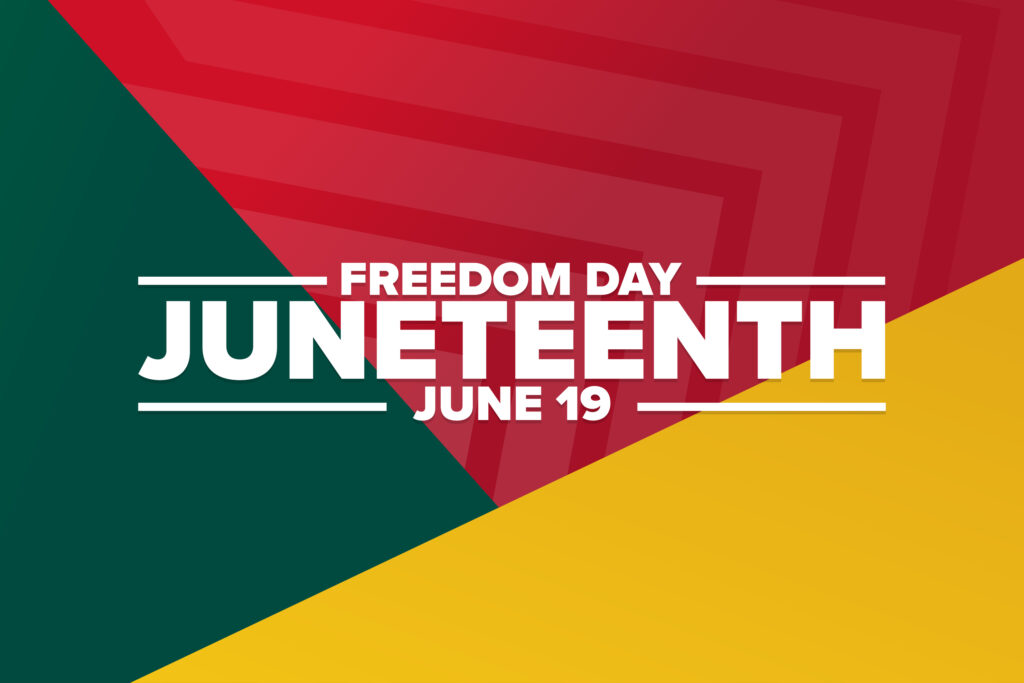It’s been almost 3 years since President Joe Biden signed Juneteenth into law as a Federal holiday on June 17, 2021, thus officially nationalizing a tradition that began in Texas. Juneteenth originated as a commemoration of June 19th, 1865, the day that General Granger arrived in Galveston, Texas and announced the end of slavery, two and a half years after Lincoln had issued the Emancipation Proclamation.*
The Color Red
Federal holiday or not, this time of year will always remind me of freedom, family and joy. I grew up in the California Bay Area celebrating Juneteenth against the backdrop of the heady and vibrant culture of the Black arts movement of the 1970s. Juneteenth signaled the end of the school year and weeks before my father would enlist my help in distributing flyers and preparing for the open mic section of our Juneteenth gatherings. On the flyer, he would always write, “bring something red! – like watermelon, red beans or red soda pop!”
At the time, I did not question the meaning behind the color red. I assumed it was related to the ubiquitous Pan-African flags that I saw in the homes of family and friends or at cultural events during Kwanzaa or Black History Month. I had been taught that the red in the Pan-African flag symbolized the blood of Black people, and the sacrifices demanded of the struggle for equality and civil rights. Surely, this is what this Juneteenth red was all about?
However, in adulthood, as I began to study it more closely, I learned that there was a bit more to the color red in Juneteenth. According to culinary historian Michael Twitty, for the enslaved Yoruba and Kongo brought to Texas in the 19th century, the color red is the embodiment of spiritual power and transformation. Another culinary historian, Adrian Miller, says this Juneteenth tradition can be traced to the fruit of two native West African plants, the kola nut and hibiscus that were brought to the Caribbean and the Americas during the transatlantic slave trade. I am most familiar with hibiscus as the source of the delicious Jamaican drink, sorrel. Another name for this drink is bissap.
It’s not surprising that culinary scholars would be the source of this information, as food is a central component of any Juneteenth. The oral tradition tells us that on the first Juneteenth, held one year after the monumental announcement by General Granger, a whole hog was barbequed for the formerly enslaved celebrants. In my family, days before Juneteenth, my father and uncles would season the meat and Dad would also start working on his famous barbeque sauce. The night before, I was called upon to chop onions, celery and potatoes (that I’d also peeled) for the potato salad. I dreaded this chore, but looking back, I miss the communal aspect of the work, the sound of the men’s voices as they prepared the meat, the soulful music playing in the background. These days, the work is done in the homes of various family and extended family before we all come together.
“And the Children Shall Lead …”
In addition to the food at the center of the celebration, children play a significant role in any Juneteenth. It is a holiday built upon the passing on of history and values to the next generation. At the first Juneteenths, recently freedmen and freedwomen shared stories of their enslavement, testimonies of survival and triumph while the youth listened. At our Juneteenths, my siblings and I prepared performances weeks in advance with other family members and friends. Every year, I read poetry, both my own and words of the classic Black poets, such as Langston Hughes, Margaret Walker and Claude McKay. I also got together with my girlfriends to create dances.
Families should think of Juneteenth as a teachable moment. A day to encourage their children to learn more about our shared American story and reflect on the meanings of freedom, while tapping into their innate creativity. Youth can write and perform reenactments of the day when General Granger arrived with union troops, many of whom were African American, to announce Order No. 3, that the enslaved were now free. This is a time when young writers, musicians and historians can hone their skills and learn about African American freedom while teaching others in the community. And what about our visual artists? Get them involved, as well, making decorations, such as banners in red proclaiming the joyfulness of the day.
Juneteenth is a glorious time for families to bask in the promise of the freedom proclaimed on that day and to be transformed by a feast of food and drink flavored with love and shades of red.
*The Emancipation Proclamation was a wartime strategy that didn’t actually end slavery. It only applied to states in the Confederacy and then only held water when enforced by the presence of Union troops. The 13th Amendment officially ended slavery on December 6, 1865.


